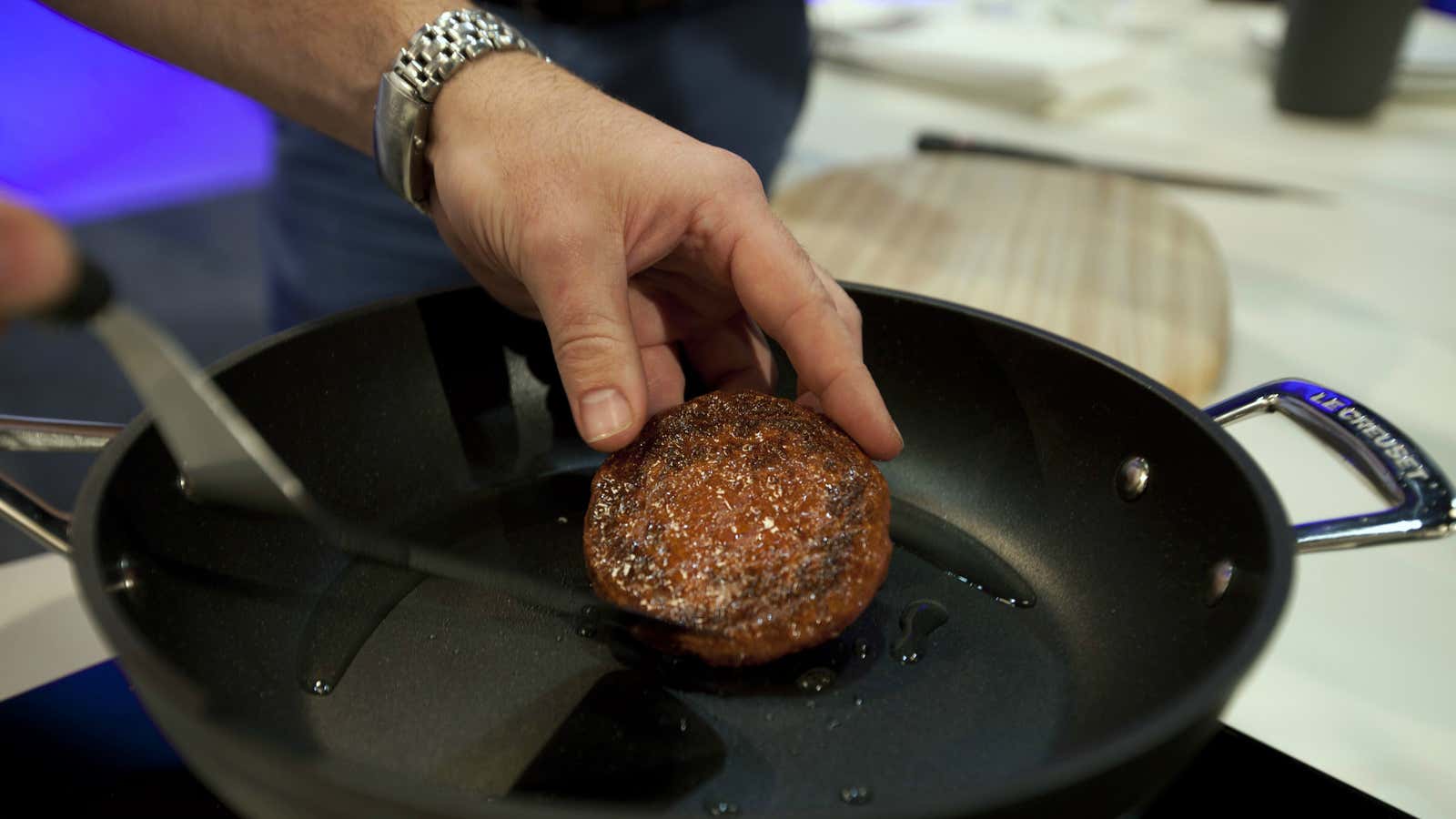High-tech alternatives to meat burgers have captured the attention of consumers as they’ve trickled into the market. While black bean burgers are already widely available, plant-based meats that strive to look, taste, and feel just like traditional meat are only just hitting the market in a big way. There’s a lot of work ahead for the companies producing them before they’ll be able to make deep inroads into people’s kitchens.
Beyond Meat made it into Whole Foods Market meat section in August 2016—the first startup to get into aisles to compete with the likes of beef and turkey—and has since gotten into dozens more. It was recently picked up by Safeway. Its chief competitor, Impossible Foods has chosen a different path, looking to get into restaurants first and retail later.
Then, there are lab-grown “cellular-agriculture meats,” the kinds being developed fiber by fiber in laboratories. None of those have hit the market. Part of the reason is because the process of making it is too cost prohibitive to amass a large supply quickly.
The issue is scaling—being able to consistently produce enough product to meet demand. There’s no doubt these new food companies are getting closer, but it will likely take several years (the consensus is that it will be around 2020) before a slab of animal-free meat will be seen as affordable by the average consumer. That’s because there isn’t a lot of automation in the laboratory process, as much is done by hand. Making cellular-agriculture products requires intensive tissue engineering; it means literally harvesting cells from fat and muscle and putting them together.
In 2013, Dutch scientist and the co-founder of Mosa Meats, Mark Post, became the first person in the world to make a cell-cultured beef burger. The process was expensive, taking three lab technicians about three months to nurture the 20,000 fibers of the burger, according to AgFunder News. That pound of lab-made beef would have cost $1.2 million per pound to sell. In the years following, that number has plummeted; Memphis Meats is currently working on lab-made chicken meat, which would retail at just under $6,000 per pound.
All of these are far more expensive than retail ground beef, which costs consumers about $3.54 per pound on average, according to data by the US Department of Agriculture. Beyond Meat’s plant-based burgers—the ones on sale in Whole Foods and some Safeway locations—rings in at about $12 per pound ($5.99 for two quarter-pounders).
Impossible Foods CEO Patrick Brown says his goal is to one day replace the meat industry altogether. For now that’s just a pipe dream, but if lab-made and plant-based meats can prove they’re friendlier to the environment, healthier, and cost less, they might just have a fighting chance.
